Opinion
Safety issue of ‘traditional’ and ‘complementary’ medicines
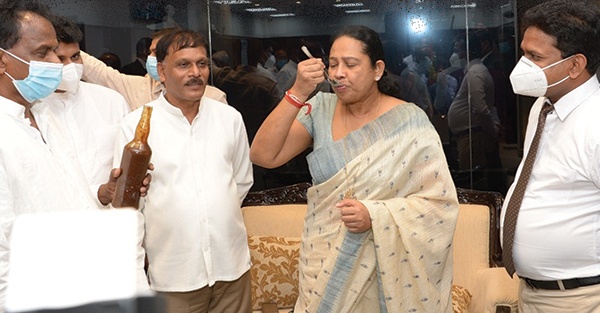
By CHANDRE DHARMAWARDANA
Every country has a lore of “traditional medicine” in addition to the mainstream medical system, which today is based on a rigorous system of institutionalized medical education based on science. Even the WHO has recently recognized and attempted to give formal structure to such Traditional and Complementary (T&C) systems of medicine (see: https://apps.who.int/iris/handle/10665/312342;jsessionid=4ADD7EEB300760DC10D0C42745ABDC31).
Thus, the WHO defines “traditional medicine” as:
“The sum total of knowledge and practices, whether explicable or not, used in diagnosing, preventing or eliminating physical, mental and social diseases. This knowledge or practice may rely exclusively on past experience and observation handed down orally or in writing from generation to generation. These practices are native to the country in which they are practiced. The majority of indigenous traditional medicine has been practised at the primary healthcare level”.
Traditional medicine, and other so-called complementary systems of medicines, tend to be far less institutionalized, with the methods of treatment traditionally handed down from a teacher to a student, who becomes part of the teacher’s “family”. This is the “guru-kula” system, where the teaching is retained as a family secret and handed down. Nevertheless, as these systems progressed and received state patronage, institutionalization and open publication of medical practices began to appear. The Mahavansa alludes to hospitals even for animals in ancient Lanka. In India, too, Sanskrit texts like the Charaka Samhitha and the Sushrutha Samhitha of Ayurveda, record the level of surgery as well as methods of treatment available to the ancients.
Nevertheless, every physician was supposed to keep his/her “Guru-mushti” (what the teacher holds in his fist), i.e. secret knowledge that the teacher revealed to the pupil, only at his deathbed. They claim that such medical practices have been confirmed by use “down the ages”, and the epithets “prathyaksha” in Sanskrit, and “ath-dutu” in Sinhala are often used to indicate safe and “well tested” medications.
No record keeping of the treatment and their outcomes, adverse effects, etc., were practised until the rise of modern medicine. Hence the claim that these preparations are “ath-dutu”, or “prathyaksha” is unjustified. Case histories that can be scrutinized by independent investigators are lacking.
Even today, when individuals propose “new” treatments for Covid-19, they make claims that the treatment is based on “ath-dutu” ancient herbal lists ,etc., as if that is all there is to it. Others, e.g., the “Hela Suvaya” team, claim that their herbal prescriptions are guided by God Natha. When a person from Hettimulla, Kegalle claimed to have created a Covid-19 treatment, to be given “free”, it attracted massive crowds! Supporters even question the need for double-blind clinical tests or chemical analysis of the new product. Politicians rush to swallow the medicine in public, while the educated public can only groan in silence.
The traditional medicine that existed in Europe in medieval times, prior to the rise of modern scientific medicine, included traditional medicine from Indian, Greek and Arab sources, together with alchemy, which was the search for a means of transforming lead into gold. Many alchemists were also medical physicians who kept their medical as well as alchemical knowledge secret.
The rise of modern scientific medicine can be attributed to the recognition, during the renaissance, that secrecy must be replaced by openness and sharing of experience to ensure objectivity. It was recognized that one’s own observations or once own experiences can be highly unreliable. How one feels, or what one sees, depends on many factors besides the level of alcohol in the blood!
Learned societies like the Royal Society (November,1660) were created for open discussion and public proof. A claimant of a “new discovery” has to reveal all details in public, at a meeting of the learned society. The tradition of holding onto “secret knowledge” or “Guru-Mushti” was thrown out. Record keeping, use of quantitative data, and repeating the experiment or test in front of everybody were key features of the methods of empirical science put into practice by the Royal Society.
So, all claimants of “new” Ayurvedic or Traditional cures for Covid (or Dengue) must release carefully recorded case histories that the claimant can use to prove that there is a preliminary case for what is claimed. It is not enough to make claims of “paran-paraa-gatha vattoruvak” (herbal list handed down from generation to generation). The quality of the herbs used must be recorded, and weighed ingredients must be indicated in grams rather than in terms of some traditional ambiguous unit. A medical body should examine the case histories and decide if there is a case for undertaking further confirmatory studies. That is, bogus claims must be eliminated at the outset. In the scientific method, any claim has to be independently verified by repeating the process, using the same prescribed medications.
Purity and consumer protection are very important and unfortunately lacking in many T&C medications (See https://dh-web.org/place.names/bot2sinhala.html#herbal). Chemical analyses of commercial Ayurvedic preparations have revealed toxic ingredients like Lead (Pb), mercury (Hg), harmful alcohols like methanol, propanols, and other ingredients, as well as extreme variation in amounts of active ingredients. Some contain admixture of potent western drugs although this is illegal. So chemical analysis of proposed T&C drugs is necessary for consumer protection.
An attractive but dangerous feature of T&C medical systems is that they can become “personal health prescriptions” (PHP) that an individual may administer without going to a physician. Modern mega-Vitamin therapies are also PHPs from “complementary” or “alternative” medicine. They become “home remedies” that people swear on, although they may not have kept records of how the PHP worked for them. Patients lack the equipment and laboratory facilities to monitor their condition. In effect, a PHP is a herbal prescription, or the use of some exotic root, fruit or “Vitamin”, without a proper case record, evolved by oneself, or “given” by a “trusted Vaidya” or medical savant. The PHP may have been adopted from some old book or an “ola-leaf” record.
St. Jerome who lived to a very ripe age in the 4th century had his own PHP for good health.
“From his 31st to 35th year he had for food six ounces of barley bread, and vegetables slightly cooked without oil. But finding that his eyes were growing dim, and that his whole body was shriveled with an eruption and a sort of stony roughness he added oil to his former food, and up to the 63 rd year of his life followed this temperate course, tasting neither fruit nor pulse, nor anything whatsoever besides”.
Today, no one would recommend such a diet free of fruits and pulses, and yet, for many centuries, many Christian monks followed St Jerome’s diet claiming it to be a “proven” healthy diet.
In India, Vagabhatta and Nagarjuna were two great teachers who prescribed the use of “Rasaindur”, which turns out to be mercury sulfide. Although these authors prescribed many such metals in their “Rasha-shasthra”, today we recognize them to be toxic and dangerous to health if ingested even at a few parts per million. The Sanskrit text “Rasatarangani” prescribes preparations containing lead, mercury, gold, silver and many other metals which are cooked with lime and herbal juices (e..g, from Nuga, the banyan tree). Well known Ayurvedic texts like the Charaka Samhitha and the Sushrutha Samhitha recommend preparations containing substances now recognized to be toxic. So the “Rishis” failed to notice the toxic effects, probably because there was no recording of case histories and studying them objectively.
Unfortunately many T&C medications are taken over by individuals who transform them into personal health prescriptions (PHPs), without the knowledge to adequately control the quantities used. For instance, “polpala” (Aerva lanata) may be taken as a herbal tea but frequent use may have serious adverse effects on the urinary tract. Similarly, individuals may use “Thebu” (Costus igneus) to control blood sugar, but end up with hypoglycemia and other side effects.
In an earlier epoch, people used to relieve their bowls in their own backyards, near paddy fields (or on the beach!). Hook worm and other intestinal-parasite infections became common as people also walked barefoot in the same land area, or in the fields. Thus there was also a tradition of taking a purge, containing mainly Aralu (Terminalia chebula) at least every six months. This was “a good health practice” recommended by T&C medicine. However, as this was administered as a home remedy, the amount of “aralu” was never properly controlled, leading to dangerous purging in some cases, and no effect in other cases. Furthermore, the purge has little effect on hookworms and such parasites, but it dangerously disturbs the gut microbiome of the person taking the purge.
So, in conclusion, at least the following steps are needed to make T&C medicine safe:
1. Every new claim must be supported by well recorded certified case histories and clinical records that are needed to justify further trials.
2. The prescription must quantitatively specify the full formulation and be subject to a chemical analysis to ensure that no known toxins are contained in the product.
3. Marketing of the product must be done ensuring product-uniformity and product standards to ensure consumer protection.
4. T&C medications must NOT be adopted as home remedies as self-medication is always dangerous.
Opinion
Disasters do not destroy nations; the refusal to change does

Sri Lanka has endured both kinds of catastrophe that a nation can face, those caused by nature and those created by human hands. A thirty-year civil war tore apart the social fabric, deepening mistrust between communities and leaving lasting psychological wounds, particularly among those who lived through displacement, loss, and fear. The 2004 tsunami, by contrast, arrived without warning, erasing entire coastal communities within minutes and reminding us of our vulnerability to forces beyond human control.
These two disasters posed the same question in different forms: did we learn, and did we change? After the war ended, did we invest seriously in repairing relationships between Sinhalese and Tamil communities, or did we equate peace with silence and infrastructure alone? Were collective efforts made to heal trauma and restore dignity, or were psychological wounds left to be carried privately, generation after generation? After the tsunami, did we fundamentally rethink how and where we build, how we plan settlements, and how we prepare for future risks, or did we rebuild quickly, gratefully, and then forget?
Years later, as Sri Lanka confronts economic collapse and climate-driven disasters, the uncomfortable truth emerges. we survived these catastrophes, but we did not allow them to transform us. Survival became the goal; change was postponed.
History offers rare moments when societies stand at a crossroads, able either to restore what was lost or to reimagine what could be built on stronger foundations. One such moment occurred in Lisbon in 1755. On 1 November 1755, Lisbon-one of the most prosperous cities in the world, was almost completely erased. A massive earthquake, estimated between magnitude 8.5 and 9.0, was followed by a tsunami and raging fires. Churches collapsed during Mass, tens of thousands died, and the royal court was left stunned. Clergy quickly declared the catastrophe a punishment from God, urging repentance rather than reconstruction.
One man refused to accept paralysis as destiny. Sebastião José de Carvalho e Melo, later known as the Marquês de Pombal, responded with cold clarity. His famous instruction, “Bury the dead and feed the living,” was not heartless; it was revolutionary. While others searched for divine meaning, Pombal focused on human responsibility. Relief efforts were organised immediately, disease was prevented, and plans for rebuilding began almost at once.
Pombal did not seek to restore medieval Lisbon. He saw its narrow streets and crumbling buildings as symbols of an outdated order. Under his leadership, Lisbon was rebuilt with wide avenues, rational urban planning, and some of the world’s earliest earthquake-resistant architecture. Moreover, his vision extended far beyond stone and mortar. He reformed trade, reduced dependence on colonial wealth, encouraged local industries, modernised education, and challenged the long-standing dominance of aristocracy and the Church. Lisbon became a living expression of Enlightenment values, reason, science, and progress.
Back in Sri Lanka, this failure is no longer a matter of opinion. it is documented evidence. An initial assessment by the United Nations Development Programme (UNDP) following Cyclone Ditwah revealed that more than half of those affected by flooding were already living in households facing multiple vulnerabilities before the cyclone struck, including unstable incomes, high debt, and limited capacity to cope with disasters (UNDP, 2025). The disaster did not create poverty; it magnified it. Physical damage was only the visible layer. Beneath it lay deep social and economic fragility, ensuring that for many communities, recovery would be slow, uneven, and uncertain.
The world today offers Sri Lanka another lesson Lisbon understood centuries ago: risk is systemic, and resilience cannot be improvised, it must be planned. Modern climate science shows that weather systems are deeply interconnected; rising ocean temperatures, changing wind patterns, and global emissions influence extreme weather far beyond their points of origin. Floods, landslides, and cyclones affecting Sri Lanka are no longer isolated events, but part of a broader climatic shift. Rebuilding without adapting construction methods, land-use planning, and infrastructure to these realities is not resilience, it is denial. In this context, resilience also depends on Sri Lanka’s willingness to learn from other countries, adopt proven technologies, and collaborate across borders, recognising that effective solutions to global risks cannot be developed in isolation.
A deeper problem is how we respond to disasters: we often explain destruction without seriously asking why it happened or how it could have been prevented. Time and again, devastation is framed through religion, fate, karma, or divine will. While faith can bring comfort in moments of loss, it cannot replace responsibility, foresight, or reform. After major disasters, public attention often focuses on stories of isolated religious statues or buildings that remain undamaged, interpreted as signs of protection or blessing, while far less attention is paid to understanding environmental exposure, construction quality, and settlement planning, the factors that determine survival. Similarly, when a single house survives a landslide, it is often described as a miracle rather than an opportunity to study soil conditions, building practices, and land-use decisions. While such interpretations may provide emotional reassurance, they risk obscuring the scientific understanding needed to reduce future loss.
The lesson from Lisbon is clear: rebuilding a nation requires the courage to question tradition, the discipline to act rationally, and leadership willing to choose long-term progress over short-term comfort. Until Sri Lanka learns to rebuild not only roads and buildings, but relationships, institutions, and ways of thinking, we will remain a country trapped in recovery, never truly reborn.
by Darshika Thejani Bulathwatta
Psychologist and Researcher
Opinion
A wise Christmas

Important events in the Christian calendar are to be regurlarly reviewed if they are to impact on the lives of people and communities. This is certainly true of Christmas.
Community integrity
Years ago a modest rural community did exactly this, urging a pre-Christmas probe of the events around Jesus’ birth. From the outset, the wisemen aroused curiosity. Who were these visitors? Were they Jews? No. were they Christians? Of course not. As they probed the text, the representative character of those around the baby, became starkly clear. Apart from family, the local shepherds and the stabled animals, the only others present that first Christmas, were sages from distant religious cultures.
With time, the celebration of Christmas saw a sharp reversal. The church claimed exclusive ownership of an inclusive gift and deftly excluded ‘outsiders’ from full participation.
But the Biblical version of the ‘wise outsiders’ remained. It affirmed that the birth of Jesus inspired the wise to initiate a meeting space for diverse religious cultures, notwithstanding the long and ardous journey such initiatives entail. Far from exclusion, Jesus’ birth narratives, announced the real presence of the ‘outsider’ when the ‘Word became Flesh’.
The wise recognise the gift of life as an invitation to integrate sincere explanations of life; true religion. Religion gone bad, stalls these values and distorts history.
There is more to the visit of these sages.
Empire- When Jesus was born, Palestine was forcefully occcupied by the Roman empire. Then as now, empire did not take kindly to other persons or forces that promised dignity and well being. So, when rumours of a coming Kingdom of truth, justice and peace, associated with the new born baby reached the local empire agent, a self appointed king; he had to deliver. Information on the wherabouts of the baby would be diplomatically gleaned from the visiting sages.
But the sages did not only read the stars. They also read the signs of the times. Unlike the local religious authorities who cultivated dubious relations with a brutal regime hated by the people, the wise outsiders by-pass the waiting king.
The boycott of empire; refusal to co-operate with those who take what it wills, eliminate those it dislikes and dare those bullied to retaliate, is characteristic of the wise.
Gifts of the earth
A largely unanswered question has to do with the gifts offered by the wise. What happened to these gifts of the earth? Silent records allow context and reason to speak.
News of impending threats to the most vulnerable in the family received the urgent attention of his anxious parent-carers. Then as it is now, chances of survival under oppressive regimes, lay beyond borders. As if by anticipation, resources for the journey for asylum in neighbouring Egypt, had been provided by the wise. The parent-carers quietly out smart empire and save the saviour to be.
Wise carers consider the gifts of the earth as resources for life; its protection and nourishment. But, when plundered and hoarded, resources for all, become ‘wealth’ for a few; a condition that attempts to own the seas and the stars.
Wise choices
A wise christmas requires that the sages be brought into the centre of the discourse. This is how it was meant to be. These visitors did not turn up by chance. They were sent by the wisdom of the ages to highlight wise choices.
At the centre, the sages facilitate a preview of the prophetic wisdom of the man the baby becomes.The choice to appropriate this prophetic wisdom has ever since summed up Christmas for those unable to remain neutral when neighbour and nature are violated.
Wise carers
The wisdom of the sages also throws light on the life of our nation, hard pressed by the dual crises of debt repayment and post cyclonic reconstruction. In such unrelenting circumstances, those in civil governance take on an additional role as national carers.
The most humane priority of the national carer is to ensure the protection and dignity of the most vulnerable among us, immersed in crisis before the crises. Better opportunities, monitored and sustained through conversations are to gradually enhance the humanity of these equal citizens.
Nations in economic crises are nevertheless compelled to turn to global organisations like the IMF for direction and reconstruction. Since most who have been there, seldom stand on their own feet, wise national carers may not approach the negotiating table, uncritically. The suspicion, that such organisations eventually ‘grow’ ailing nations into feeder forces for empire economics, is not unfounded.
The recent cyclone gave us a nasty taste of these realities. Repeatedly declared a natural disaster, this is not the whole truth. Empire economics which indiscriminately vandalise our earth, had already set the stage for the ravage of our land and the loss of loved ones and possessions. As always, those affected first and most, were the least among us.
Unless we learn to manouvre our dealings for recovery wisely; mindful of our responsibilities by those relegated to the margins as well as the relentles violence and greed of empire, we are likely to end up drafted collaborators of the relentless havoc against neighbour and nature.
If on the other hand the recent and previous disasters are properly assessed by competent persons, reconstruction will be seen as yet another opportunity for stabilising content and integrated life styles for all Lankans, in some harmony with what is left of our dangerously threatened eco-system. We might then even stand up to empire and its wily agents, present everywhere. Who knows?
With peace and blessings to all!
Bishop Duleep de Chickera
Opinion
Ranwala crash: Govt. lays bare its true face
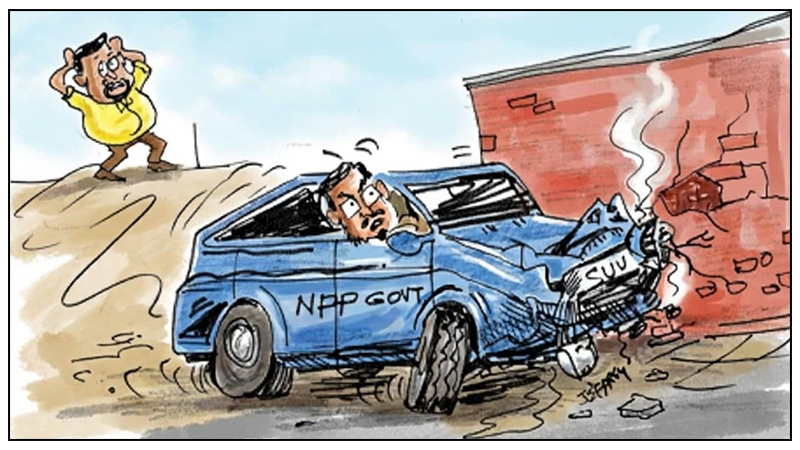
The NPP government is apparently sinking into a pit dug by the one of its members, ‘Dr’ Asoka Ranwala; perhaps a golden pit (Ran Wala) staying true to his name! Some may accuse me of being unpatriotic by criticising a government facing the uphill task of rebuilding the country after an unprecedented catastrophe. Whilst respecting their sentiment, I cannot help but point out that it is the totally unwarranted actions of the government that is earning much warranted criticism, as well stated in the editorial “Smell of Power” (The Island, 15 December). Cartoonist Jeffrey, in his brilliance, has gone a step further by depicting Asoka Ranwala as a giant tsunami wave rushing to engulf the tiny NPP house in the shore, AKD is trying to protect. (The Island, 18 December).
The fact that Asoka Ranwala is very important to the JVP, for whatever reason, became evident when he was elected the Speaker of Parliament despite his lack of any parliamentary experience. When questions were raised about his doctorate in Parliament, Ranwala fiercely defended his position, ably supported by fellow MPs. When the Opposition kept on piling pressure, producing evidence to the contrary, Ranwala stepped aside, claiming that he had misplaced the certificate but would stage a comeback, once found. A year has passed and he is yet to procure a copy of the certificate, or even a confirmatory letter from the Japanese university!
The fact that AKD did not ask Ranwala to give up his parliamentary seat, a decision he may well be regretting now following recent events, shows that either AKD is not a strong leader who can be trusted to translate his words to action or that Ranwala is too important to be got rid of. In fact, AKD should have put his foot down, as it was revealed that Ranwala was a hypocrite, even if not a liar. Ranwala led the campaign to dismantle the private medical school set up by Dr Neville Fernando, which was earning foreign exchange for the country by recruiting foreign students, in addition to saving the outflow of funds for educating Sri Lankan medical graduates abroad. He headed the organisation of parents of state medical students, claiming that they would be adversely affected, and some of the photographs of the protests he led refer to him as Professor Ranwala! Whilst leading the battle against private medical education, Ranwala claims to have obtained his PhD from a private university in Japan. Is this not the height of hypocrisy?
The recent road traffic accident he was involved in would have been inconsequential had Ranwala been decent enough to leave his parliamentary seat or, at least, being humble enough to offer an apology for his exaggerated academic qualifications. After all, he is not the only person to have been caught in the act of embellishing a CV. As far as the road traffic accident is concerned, too, it may not be his entire responsibility. Considering the chaotic traffic, in and around Colombo, coupled with awful driving standards dictated by lack of patience and consideration, it is a surprise that more accidents do not happen in Sri Lanka. Following the accident, may be to exonerate from the first count, a campaign was launched by NPP supporters stating that a man should be judged on his achievements, not qualifications, further implying that he does not have the certificate because he got it in a different name!
What went wrong was not the accident, but the way it was handled. Onlookers claim that Ranwala was smelling of alcohol but there is no proof yet. He could have admitted it even if he had taken any alcohol, which many do and continue to drive in Sri Lanka. After all, the Secretary to the Ministry overseeing the Police was able to get the charge dropped after causing multiple accidents while driving under the influence of liquor! He, with another former police officer, sensing the way the wind was blowing formed a retired police collective to support the NPP and were adequately rewarded by being given top jobs, despite a cloud hanging over them of neglect of duty during the Easter Sunday attacks. This naïve political act brought the integrity of the police into question. The way the police behaved after Ranwala’s accident confirmed the fears in the minds of right-thinking Sri Lankans.
In the euphoria of the success of a party promising a new dawn, unfortunately, many political commentators kept silent but it is becoming pretty obvious that most are awaking to the reality of a false dawn. It could not have come at a worse time for the NPP: in spite of the initial failures to act on the warnings regarding the devastating effects of Ditwah, the government was making good progress in sorting problems out, when Ranwala met with an accident.
The excuses given by the police for not doing a breathalyser test, or blood alcohol levels, promptly, are simply pathetic. Half-life of alcohol is around 4-5 hours and unless Ranwala was dead drunk, it is extremely unlikely any significant amounts of alcohol would be detected in a blood sample taken after 24 hours. Maybe the knowledge of this that made government Spokesmen to claim boldly that proper action would be taken irrespective of the position held. Now that the Government Analyst has not found any alcohol in the blood, no action is needed! Instead, the government seems to have got the IGP to investigate the police. Would any police officers suffer for doing a favour to the government? That is the million-dollar question!
Unfortunately, all this woke up a sleeping giant; a problem that the government hoped would be solved by the passage of time. If the government is hoping that the dishonesty of one of its prominent members would be forgotten with the passage of time, it will be in for a rude shock. When questioned by journalists repeated, the Cabinet spokesman had to say action would be taken if the claim of the doctorate was false. However, he added that the party has not decided what that action would be! What about the promise to rid Parliament of crooks?
It is now clear that the NPP government is not any different from the predecessors and that Sri Lankan voters are forced to contend with yet another false dawn!
by Dr Upul Wijayawardhana ✍️
-

 News2 days ago
News2 days agoMembers of Lankan Community in Washington D.C. donates to ‘Rebuilding Sri Lanka’ Flood Relief Fund
-

 Business6 days ago
Business6 days agoUnlocking Sri Lanka’s hidden wealth: A $2 billion mineral opportunity awaits
-

 News6 days ago
News6 days agoArmy engineers set up new Nayaru emergency bridge
-
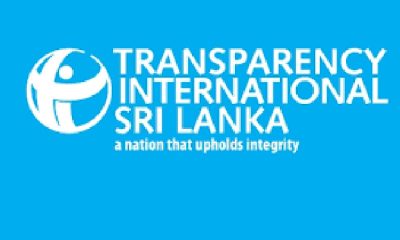
 News6 days ago
News6 days agoTISL, civil society flay NPP govt. for holding up Auditor General’s appointment
-

 Latest News5 days ago
Latest News5 days agoLandslide early warnings issued to the districts of Badulla, Kandy, Kurunegala, Matale and Nuwara-Eliya extended till 8AM on Sunday (21)
-
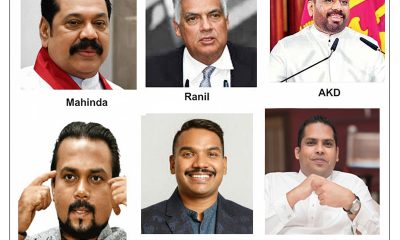
 Opinion6 days ago
Opinion6 days agoThe Maha Jana Handa at Nugegoda, cyclone destruction, and contenders positioning for power in post-NPP Sri Lanka – II
-
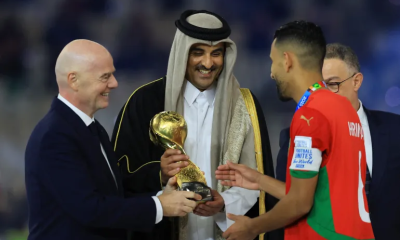
 Latest News6 days ago
Latest News6 days agoTannane goal from own half sets Morocco on way to FIFA Arab Cup 2025 title
-
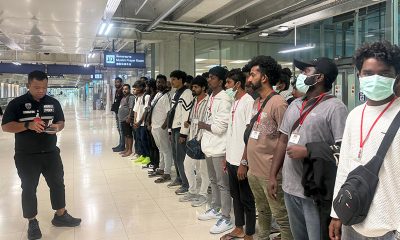
 News6 days ago
News6 days agoSri Lankans rescued from cybercrime centers in Myanmar repatriated













